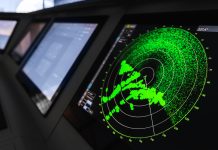
A collaboration across Berkeley Lab and UC Berkeley has performed a simulation of a quantum microchip using nearly all 7,168 NVIDIA GPUs on the Perlmutter supercomputer. This physical modelling is a vital step toward perfecting next-generation quantum hardware
A team of researchers has achieved a significant breakthrough in quantum hardware development by performing an unprecedented simulation of a multi-layered quantum microchip. Utilising nearly the entire computational power of the Perlmutter supercomputer at the National Energy Research Scientific Computing Centre (NERSC), the team captured the intricate structure and function of the chip in stunning, physical detail.
This effort, featuring a coalition of scientists from Lawrence Berkeley National Laboratory (Berkeley Lab) and the University of California, Berkeley, represents a crucial step toward perfecting the components required for next-generation quantum technology.
Utilising exascale power for microscopic detail
The simulation was carried out using the exascale modelling tool ARTEMIS, developed by Quantum Systems Accelerator (QSA) researchers Zhi Jackie Yao and Andy Nonaka of Berkeley Lab’s Applied Mathematics and Computational Research (AMCR) Division. ARTEMIS is a classical electromagnetic modelling tool that is ideally suited for the traditional microwave engineering components present in quantum microchip designs.
To achieve this level of detail, the researchers leveraged 7,168 NVIDIA GPUs on the Perlmutter supercomputer over a 24-hour period. This massive computational effort was necessary to model the tiny, complex chip, which measures just 10 millimetres square and 0.3 millimetres thick, featuring etchings only one micron wide.
“We discretised the chip into 11 billion grid cells,” Nonaka noted, allowing the team to run over a million time steps in just seven hours and evaluate three different circuit configurations within a single day. This depth of analysis is unique, as other simulations often treat chips as “black boxes” due to computational constraints.
Focusing on physical reality
What sets this simulation apart is its focus on full-wave physical-level simulation. Yao emphasised that the model includes critical physical details often omitted, such as the material composition, the exact layout, the wiring (e.g., niobium wires), and the size and shape of the resonators.
“The computational model predicts how design decisions affect electromagnetic wave propagation in the chip,” said Nonaka, ensuring proper signal coupling and preventing unwanted crosstalk. The simulation mimicked actual lab experiments, showing how qubits communicate with each other and with other parts of the quantum circuit.
This capability—combining a focus on the physical design with real-time simulation using the time domain to incorporate nonlinear behaviour—gives the team a one-of-a-kind platform for design optimisation. Katie Klymko, a NERSC quantum computing engineer, called the project “one of the most ambitious quantum projects on Perlmutter to date.”
Quantum microchips: The road to fabrication
The simulated chip was designed collaboratively by Irfan Siddiqi’s Quantum Nanoelectronics Laboratory at UC Berkeley and Berkeley Lab’s Advanced Quantum Testbed (AQT). The work is set to be featured in a technical demonstration at the International Conference for High Performance Computing, Networking, Storage, and Analysis (SC25).
Looking ahead, the team plans to use the model to strengthen their quantitative understanding of the chip’s spectral behaviour and how the qubit resonates with the rest of the circuit. The ultimate test will come when the physical chip is fabricated and tested, allowing the researchers to benchmark the model against real-world performance.
QSA Director Bert de Jong hailed the collaborative nature of the project as a “critical step forward to accelerate the design and development of quantum hardware,” which promises to unlock new capabilities for science.










